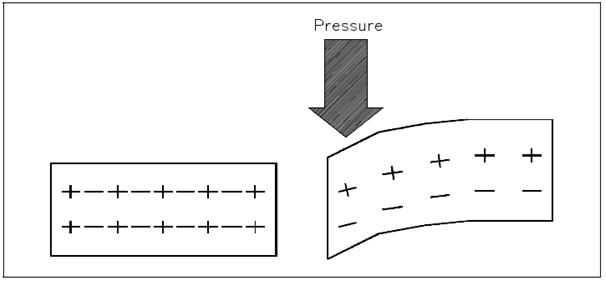Piezoelectric Effect:
Through applying pressure to certain crystals (like as quartz or Rochelle salts) or certain ceramics (such as barium titanate), electrons could be driven out of orbit within the direction of the force. An Electron leaves one side of the material and accumulates on the other side, building up negative and positive charges on opposite sides, as display in Figure. Whenever the pressure is released, the electrons return to their orbits. A few materials will react to bending pressure, although others will respond to twisting pressure. That generation of voltage is known as the piezoelectric effect electrons will flow and current will be produced if external wires are connected while pressure and voltage are present. The current will flow until the potential difference is equalized if the pressure is held constant.
When the force is removed, the material is decompressed and instantly causes an electric force in the opposite direction. A power capacity of these materials is extremely small. Therefore, these materials are extremely useful since of their extreme sensitivity to changes of mechanical force.

Figure: Pressure Applied to Certain Crystals Produces an Electric Charge
Example: One example is the crystal phonograph cartridge which contains a Rochelle salt crystal. The phonograph needle is attached to the crystal. The needle moves in the grooves of a record, applying compression and decompression to the crystal, it swings from side to side. This mechanical motion applied to the crystal generates a voltage signal that is used to reproduce sound.